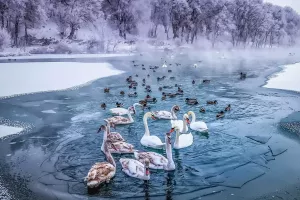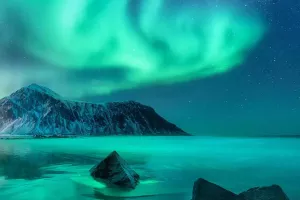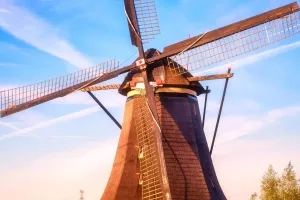Nature has created countless miraculous landscapes with its magic, not only providing magnificent scenery but also offering different values to experience.
These natural wonders and beautiful scenery are fascinating. Today we will guide you through an enchanting tour of the world's most stunning natural sceneries.
1. Barun Valley, Nepal
Barun Valley is part of the Himalayas. Here you can visit valleys and national parks at any time to enjoy the beauty. It is known for its beautiful waterfalls, deep canyons, and dense jungle. This amazing valley is not only one of the most beautiful valleys but also the largest local valley.
It extends about 27 kilometers, surrounded by picturesque mountains that are 3,000 meters high. This is the only area in the entire valley with glaciers, providing tourists with unique landscapes.
2. Isle of Skye, Scotland
If you want to see the most beautiful natural scenery in the UK, don't miss the Isle of Skye in Scotland. There are boundless seas, quiet pastoral scenery, lakes, and mountains. The most famous attraction on the island is "the Old Man's Peak".
It is made from volcanic rocks in the Jurassic Geological Period, and it is a beautiful fairyland hidden at the end of the world. If you are full of energy and can hike to the peak, you will definitely be fascinated by this beautiful scenery.
3. Peyto Lake, Canada
The most striking part of Peyto Lake is its green color. The dark green forests, the reflection of the white clouds of the sky, and the exposed rocks in the distant mountains make the scenery look far and dreamy.
As one of the most popular landscapes in Banff National Park, there are multiple tour lines around Peyto Lake. On October 9, 2021, the observation platform and the trail were reopened to tourists after renovation. People can stand on a flat and spacious countertop and enjoy the wonderful color of the lake.
4. Marble Caves, Chile
The Marble Caves are located in the Patagonian mountains, next to General Carrera Lake. Under the scouring of the lake for thousands of years, many stone pillars with different postures were formed in the cave.
Some of the walls are light gray, others share the same blue as the lake. When rowing in the cave, people can see many swirl-like lines on the stone wall, sometimes encounter the refraction of sunlight, and see the sparkling light floating on the stone surface.
5. Grand Canyon, USA
Located in northwestern Arizona, the Grand Canyon was formed by the erosion of the Colorado River over millions of years. The canyon is characterized by its red rock, jagged terrain, and cliffs. The total length of the canyon is about 446 kilometers, and the average depth is 1,200 meters.
From the bottom of the valley to the top, the rocks of each geological period have clear layers and different colors and contain representative biological fossils. Therefore, in addition to the stunning scenery, the scientific significance of the canyon is also prominent.


